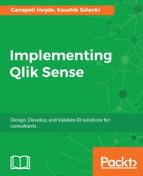Documentation consumes significant time in a project and is often considered monotonous and boring. However, neglecting this aspect will prove detrimental to your project.
Documentation starts from preparatory steps and extends until go-live. Change management post implementation will call for additional documentation. In an earlier section, we went through the project brief. There are several other areas where documentation needs to be maintained. They need to be visited often. This helps you to notice anomalies and also helps you to identify risks.
Some of the areas where a consultant should maintain documentation are:
- Customer Info: This is your internal document, based on your study of the customer. Refer to earlier chapter (Chapter 2, Preparing for the project) and based on the information gathered from the website, stake holder's goals, nature of business, current systems, and other relevant topics document the same.
- Initial project brief: This is the document that provides an overview of the project and is the base for other documents.
- Requirement gathering template: This template helps you to get all the information and also helps you to suggest value add.
- Scope document: It is a detailed document mentioning the scope of the project.
- Solution architecture: This document mentions details of your solution.
- Deployment architecture: This document mentions network and security aspects. This document also depicts the different components and the interaction between each of them.
- UI wireframe: The wire-frame helps you to discuss with stakeholders about how the application will look. This helps you cut down on re-works and helps you to set your client expectation much better.
- Implementation methodology: This document helps you to make clients aware of the different aspects in the implementation.
- Project plan: This documents helps you to break down the project into phases and milestones, and allocate work to people. This document also mentions task dependency.
- Non-functional document: This document captures all the technical aspects of the project, including hardware and software requirements. It also covers security and governance aspects, architecture, and backup plan.
- User manual: This document is a customized document. It acquaints the first time users with various aspects like details of the application, getting started with the software, and various features and functions.
- Test cases for data validation: It is important to do data validation, and the test cases must be kept ready to ensure the values match with the expected values.
- FAQ document: It helps the user to get quick answers and helps the adoption of the software.
- Scope change template: It helps you to document the changes in scope. This can impact other documents and they too should be revised accordingly.
- Project review presentation: This can be a weekly/fortnightly activity. This helps you to present to your client what was done, what is pending, what is the plan for next week/fortnight, and what, if any, are the dependencies impacting the project. This document also highlights risks which may occur due to some aspects not being taken care of or done in time.
The list looks big, but going through the process of maintaining these documents helps you to be in control of the project. Timely review is very essential and any deviations should be immediately assessed. This can also help early detection and control of risks.
Documentation also helps you to be prepared for unforeseen events, such as people moving out from the organization. We also recommend working with the client and preparing videos wherever possible. Training can be recorded and then they can be played for the new users to make them learn quickly. Developers too should be made to follow best practices and document their code, and provide comments to make the code more readable.
